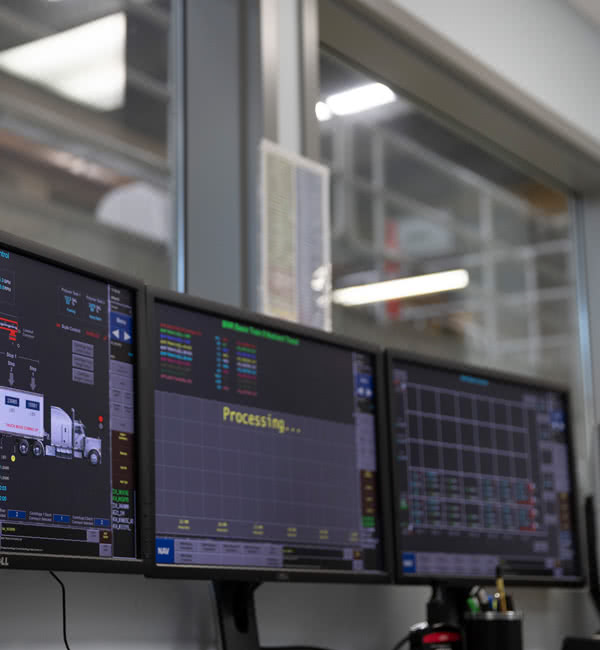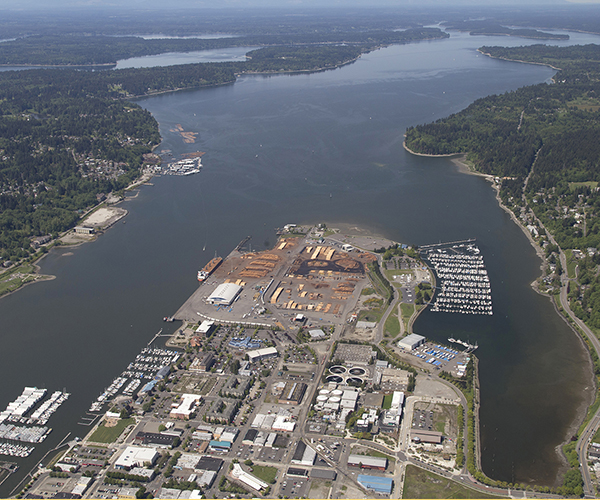A Continuous Planning Approach
LOTT operates under a continuous planning model, adjusting plans in response to changing information to ensure the existing wastewater system is well-maintained and new capacity is ready when needed. This means reviewing system flows and loads frequently, assessing the condition of existing infrastructure, projecting future system demands and reassessing the priority of planned capital projects to best meet our communities’ needs now and into the future.

Capacity Planning
The continuous planning approach requires the ongoing assessment of LOTT’s overall operational capacity, which includes treatment capacity, discharge/beneficial use capacity and conveyance capacity. An annual waste load assessment is conducted to identify changes or additions to planned capital projects or programs. This information is provided to the Washington State Department of Ecology biennially in a Capacity Assessment report to demonstrate that adequate capacity exists, or is being planned for, in the system.
Download the 2023 Capacity Reports (PDF).
Asset Management
LOTT’s Asset Management Program includes long-range planning, life-cycle costing, proactive operations and maintenance, and capital replacement plans based on cost-benefit analyses. It involves inventorying all assets, evaluating their condition and criticality, identifying maintenance needed to extend their useful life and determining when assets are in need of repair or replacement. This information is used to sustain existing infrastructure and plan ahead for necessary replacements.
Download the Asset Management Program Executive Summary (PDF).
Capital Improvements Planning
LOTT maintains a biennial Capital Improvements Plan (CIP), a rolling six-year CIP and a longer term 20-year CIP, updating each as part of the biennial budget process. This strategy focuses design and construction efforts on immediate needs, while forecasting and developing a finance plan to implement the CIP projects over time. The CIP is built around four major project categories: system upgrades, new capacity, asset management (repair, rehabilitation and replacement) and support services and projects. It is informed by updated capacity reports, asset management evaluations and other changing conditions.
Download the 2025-2026 Budget and Capital Improvements Plan (PDF).

System-Wide Planning
An Adaptable, Effective Plan for the Future
In 2018, LOTT began a multi-phase planning effort to update the long-range plan. The plan outlines long-range strategies for meeting the wastewater management needs of our communities through the year 2050. The purpose of this planning work was to complete a comprehensive facility needs assessment for the Budd Inlet Treatment Plant and to revisit and evaluate LOTT’s system-wide long-range planning direction. The work builds on strategies identified in LOTT’s original long-term Wastewater Resource Management Plan that was developed in the late 1990s. After 25 years, the framework established under the original plan is still relevant in many ways, and can be adjusted to take advantage of advancements in technology and opportunities for cost-efficiency. The 2050 LOTT System Plan points to a combination of strategies to maximize flexibility and meet future community needs, not only for wastewater system capacity but also for access to reclaimed water as a resource.
More Information:
Wastewater Resource Management Plan
This long-range plan was developed in the late 1990s to guide the management, programs, capital projects and operations of the LOTT Clean Water Alliance through the year 2020. The plan was a product of public values and public comment received throughout a multi-year planning process. It set in place a plan for meeting the growing wastewater management needs of the LOTT partner jurisdictions over time.
Public Values
Through extensive public involvement, ten public values were identified. These values shaped the long-range plan, and have served to guide decisions regarding operations, capital projects and programs ever since. These values include protecting the environment, controlling costs, maximizing use of existing facilities before investing in new ones, using treated water as a resource, developing facilities with multiple community benefits and more.
Four Key Elements
The Wastewater Resource Management Plan identified four key elements to meet community needs over time. First, continue discharge of advanced secondary treated water to Budd Inlet. Second, meet future capacity needs in part by producing Class A reclaimed water for reuse. Third, use Class A reclaimed water upland for groundwater replenishment, to reduce the amount discharged to Budd Inlet. And fourth, implement a flow reduction program to reduce the flows entering the wastewater system.
Plan Implementation
An Intergovernmental Agreement was approved by the four LOTT partners (Lacey, Olympia, Tumwater and Thurston County) in January 2000 to restructure LOTT and implement the plan. In 2004, the first upgrade under the new plan occurred at the Budd Inlet Treatment Plant, with the addition of the Budd Inlet Reclaimed Water Plant. The same year, construction began on the Martin Way Reclaimed Water Plant, which began operation in 2006. LOTT now produces Class A reclaimed water at both locations.
Wastewater Resource Management Plan
This long-range plan was developed in the late 1990s to guide the management, programs, capital projects, and operations of the LOTT Clean Water Alliance through the year 2020. The plan was a product of public values and public comment received throughout a multi-year planning process. It set in place a plan for meeting the growing wastewater management needs of the LOTT partner jurisdictions over time.
Public Values
Through extensive public involvement, ten public values were identified. These values shaped the long-range plan, and have served to guide decisions regarding operations, capital projects, and programs ever since. These values include protecting the environment, controling costs, maximizing use of existing facilities before investing in new ones, using treated water as a resource, developing facilities with multiple community benefits, and more.
Four Key Elements
The Wastewater Resource Management Plan identified four key elements to meet community needs over time. First, continue discharge of advanced secondary treated water to Budd Inlet. Second, meet future capacity needs in part by producing Class A reclaimed water for reuse. Third, use Class A reclaimed water upland for groundwater replenishment, to reduce the amount discharged to Budd Inlet. And fourth, implement a flow reduction program to reduce the flows entering the wastewater system.
Plan Implementation
An Intergovernmental Agreement was approved by the four LOTT partners (Lacey, Olympia, Tumwater, and Thurston County) in January 2000 to restructure LOTT and implement the plan. In 2004, the first upgrade under the new plan occurred at the Budd Inlet Treatment Plant, with the addition of the Budd Inlet Reclaimed Water Plant. The same year, construction began on the Martin Way Reclaimed Water Plant, which began operation in 2006. LOTT now produces Class A reclaimed water at both locations.